Radeon HD 2600 XT performance
Feel free to ignore the Radeon HD 2400 XT numbers; they're included for architectural analysis (fun) only.
Far Cry
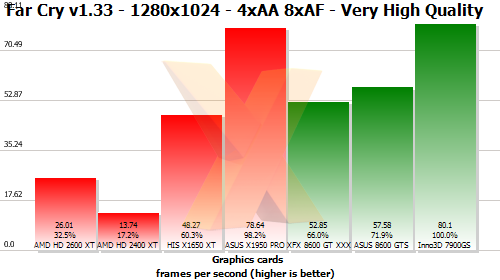
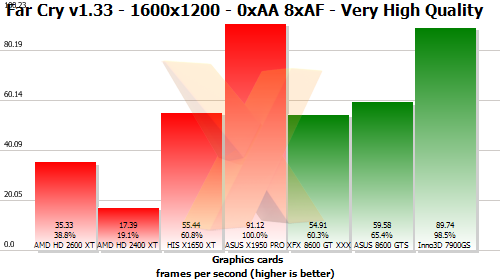
Far Cry, on the whole, places a larger dependence on pushing through good-looking pixels at a fast rate. We use the Pier map, which isn't as heavy on the pixel and vertex shading elements as, say, the Research level.
Whatever the game requirements, it's clear that Radeon HD 2600 XT performance is, frankly, horrible. It's comfortably bested by a Radeon X1650 XT and wilfully thrashed by a Radeon X1950 Pro - a card that comes in at just a little more. A driver bug or just poor hardware performance? We favour a non-optimised driver as the culprit right now.
The situation doesn't look rosy when compared to NVIDIA's mid-range DX10/9 parts, either. Are we seeing the same sort of driver issues that, in part, plagued the Radeon HD 2900 XT's performance? It seems so.
Quake 4
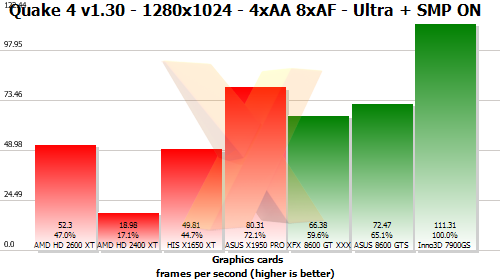
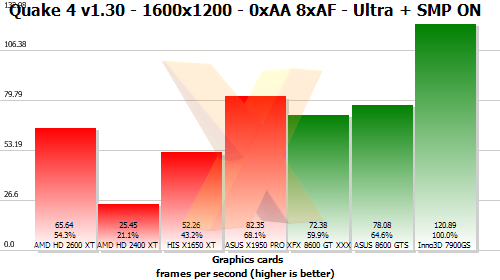
Quake 4 performance is a little better but still below a GeForce 8600 GT's. Again, comparing against the older generation that's handily equipped for moving textures around at blistering rates we see that it comes off looking second best.
Splinter Cell: Chaos Theory
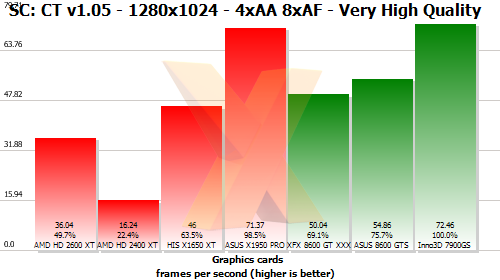
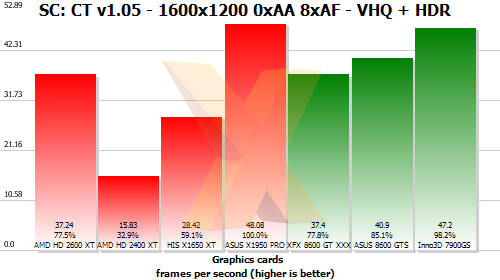
SC:CT places a larger emphasis on the kind of scene-shading that stream-processing cards should be good at. The Radeon HD 2600 XT has trouble when running antialiasing at 1280x1024 but the comparative situation improves as we dial up the resolution and remove AA, suggesting that the top-heavy design, with the obvious focus on shading, is causing lopsided performance.
Things look slightly brighter still when we add HDR into the mix. The post-processing required is where the Radeon 2600 XT should shine. Its filtering speed for 64-bit HDR textures is markedly faster than the X1K series, for example. But an overall lack of power and (from what we observed) non-optimised drivers, together mean that it only gains performance-parity with a GeForce 8600 GT.









